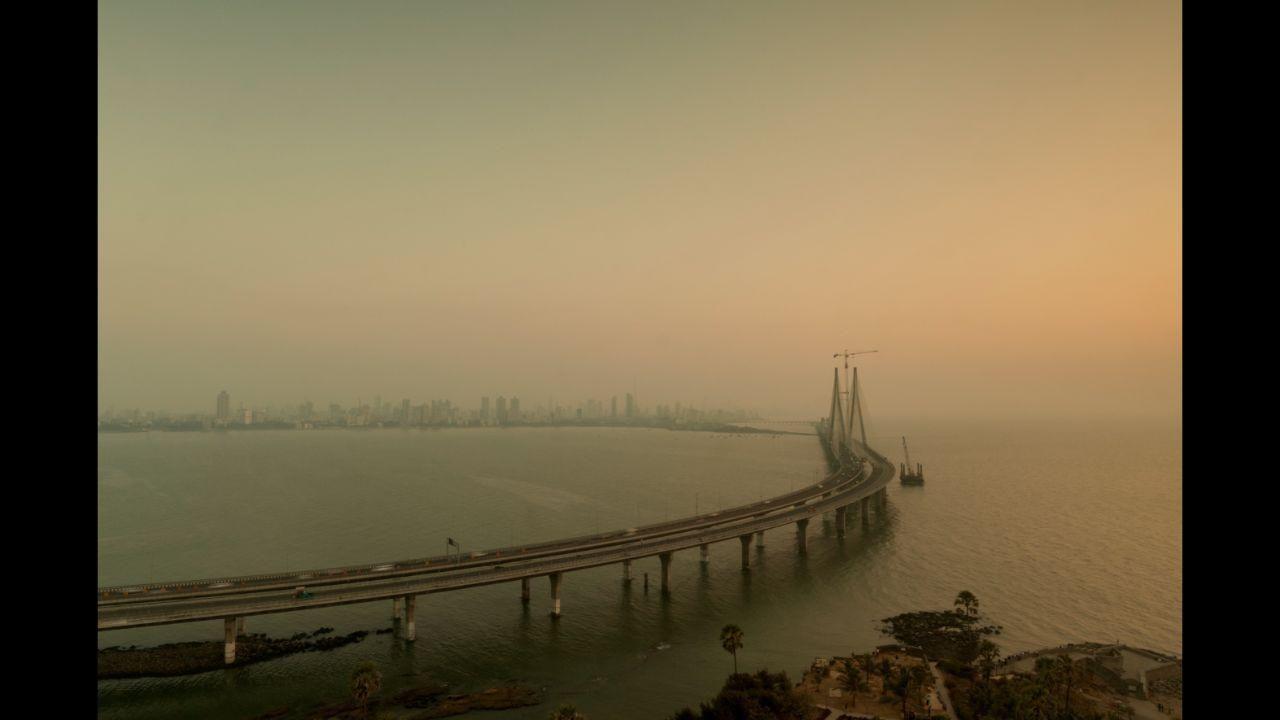The city’s AQI saw a rise of 40 points as compared to 139 on Sunday morning

Bandra-worli sea link. Pic/ istock
Mumbai’s air quality worsened on Monday morning with AQI 179.
ADVERTISEMENT
According to aqi.in, the city’s AQI saw a rise of 40 points as compared to 139 on Sunday morning.
The report also stated that PM 2.5 and PM 10 concentration in Mumbai are 108 and 184 respectively.
According to Swiss organisation iQAir, PM2.5 concentration in Mumbai air is currently 15.1 times above the WHO annual air quality guideline value.
Here are the location-wise details.
|
Location |
Status |
AQI |
PM 2.5 |
PM 10 |
|
Bandra East |
Poor |
164 |
81 |
133 |
|
Juhu |
Poor |
180 |
110 |
152 |
|
Malad VM |
Poor |
170 |
92 |
211 |
|
Vile Parle West |
Poor |
188 |
124 |
201 |
It is advisable to avoid outdoor exercises. Try to stay indoors with purifiers on as far as practicable and do not forget to wear N95 masks if venturing out.
Fine particulate matter (PM2.5) is an air pollutant that is a concern for people's health when levels in air are high. PM2.5 is tiny particles in the air that reduce visibility and cause the air to appear hazy when levels are elevated. Outdoor PM2.5 levels are most likely to be elevated on days with little or no wind or air mixing.
Air Quality Index (AQI) is a yardstick to measure the quality of air in a given area. It is measured from 0 to 500. A higher value of AQI denotes a greater level of pollutants in the air and hence a more severe impact on health.
The AQI index is divided into six categories, each corresponding to a different level of health concern.
- Green (0-50) - Good
- Yellow (51-100) - Moderate
- Orange (101-150) - Unhealthy for sensitive groups
- Red (151-200) - Unhealthy
- Purple (201-300) - Very unhealthy
- Maroon (301 and higher) – Hazardous
 Subscribe today by clicking the link and stay updated with the latest news!" Click here!
Subscribe today by clicking the link and stay updated with the latest news!" Click here!







